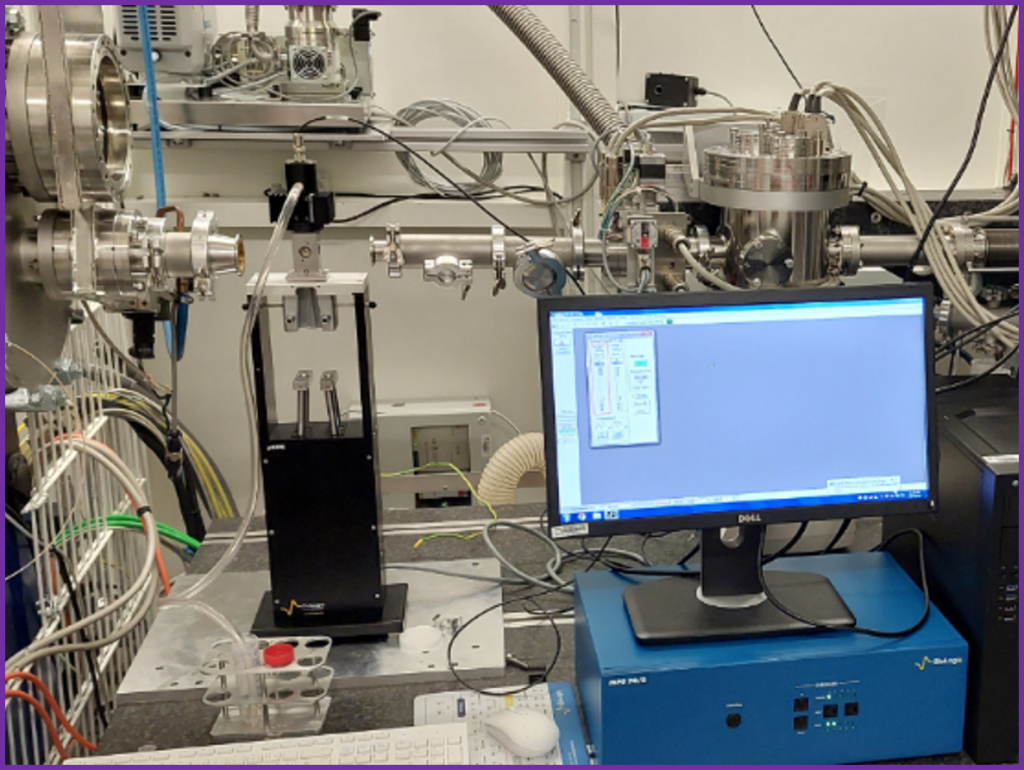Stopped-Flow Mixing
SFM-SAXS

The Time-Resolved BioSAXS (TR-SAXS) sample environment at P12 provides several options for investigating rapid structural changes in biological macromolecules using SAXS.
These setups allow for precise time-resolved measurements to capture dynamic processes in solution under native-like conditions, allowing users to capture and analyze structural transitions that occur over short timescales.
Access to TR-SAXS is possible via a designated project proposal, and users are granted designated beamtime.
Users are strongly encouraged to contact the beamline staff to discuss the project.
Unless the user has pre-existing SAXS data of the system of interest in equilibrium, often users are asked to perform or mail-in their samples for Automated SAXS before TR-SAXS.
We provide the following modes for TR-SAXS:
SFM-SAXS
Stopped-flow mixing SAXS measurements (SFM-SAXS) are performed at P12 using a Biologic mixing device coupled with an X-ray observation head.
This device operates in air and enables fast mixing of solutions, allowing for studying biomolecular interactions, conformational changes, and folding events over millisecond timescales.
The main SFM instrument is the µSFM (https://www.biologic.net/products/%c2%b5sfm/), which can mix ratios up to 1:9, and sample consumption can be as little as 2 µl.
For larger sample volumes and setups that require the use of multiple pistons, we also offer the SFM-400 mixing device (https://www.biologic.net/products/sfm2000-3000-4000-stopped-flow/).
Laser-SAXS
Continuous (diode) and pulse lasers are available at P12. Both lasers could be connected to the sample exposure unit via an optical fiber, allowing for laser excitation of the sample in the SAXS beam path.
A set of laser diodes with different wavelengths and powers is provided for continuous sample illumination. Please check with your local contact whether a diode with the required wavelength is available.
For pulse laser illumination, an EKSPLA NT350 tunable laser is used: